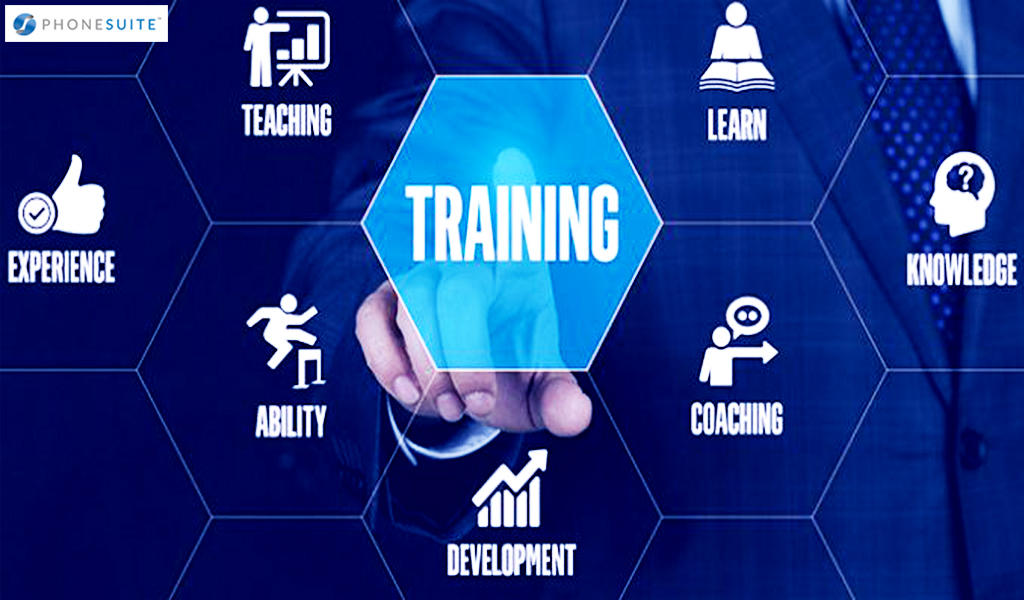As a hotel marketer, you have no doubt seen firsthand how important it is to have well-trained and knowledgeable staff in order to provide the best customer service. Yet for many hotels, training and development programs can be overlooked or left by the wayside due to budget cuts or busy schedules. However, having an effective employee training program that enables your team members to retain both knowledge of their roles as well as valued skillsets within the hospitality industry has been proven to not only create a more successful workforce, but also to lead directly towards increased profits over time. In this blog post we will discuss why creating effective training and development programs is vital for any hospitality business looking to better serve their customers while meeting bottom-line goals.
Understanding the Benefits of Employee Training and Development Programs in Hospitality
Employee training and development programs are crucial for the success of any business, and it’s no different in the hospitality industry. Not only do these programs help to enhance the skills and knowledge of employees, but they also provide a sense of motivation and engagement that can increase job satisfaction and reduce turnover rates.
Employee training and development programs are essential in the hospitality industry for various reasons. Here are some benefits of employee training and development programs in the hospitality industry:
Improving Employee Performance:
By providing employees with the necessary skills and knowledge, they are better equipped to perform their jobs effectively, resulting in improved customer service, productivity, and overall performance.
Boosting Employee Morale:
Providing training and development opportunities to employees can increase their job satisfaction and motivation, leading to increased employee retention and loyalty.
Keeping Up With Industry Trends:
The hospitality industry is constantly evolving, and employee training and development programs can ensure that employees are up-to-date with industry trends, changes, and regulations.
Enhancing Customer Satisfaction:
Well-trained employees are better equipped to provide exceptional customer service, leading to increased customer satisfaction, repeat business, and positive reviews.
Developing Future Leaders:
Training and development programs can provide employees with the necessary skills and knowledge to advance their careers within the organization, resulting in a pool of qualified future leaders.
Reducing Employee Turnover:
Offering training and development opportunities can increase employee engagement and satisfaction, leading to reduced turnover and associated costs such as recruiting and training new employees.
Creating a Positive Work Environment:
Providing employees with opportunities for personal and professional growth can create a positive work environment and culture, leading to increased employee engagement, collaboration, and teamwork.
Creating an Effective Strategy for Implementing Training Programs in Hospitality
Creating and implementing employee training and development programs is essential for the hospitality industry. Not only does it help improve the skills and knowledge of employees, but it also increases job satisfaction and employee retention.
Here are the steps to creating and implementing effective training and development programs:
Identify Training Needs:
Determine the skills and knowledge that employees need to perform their jobs effectively. This could be done through employee surveys, performance evaluations, or observation.
Set Goals & Objectives:
Based on the identified needs, set clear goals and objectives for the training program. These should be specific, measurable, achievable, relevant, and time-bound.
Design The Training Program:
Create a training program that aligns with the goals and objectives. This could include classroom training, online courses, on-the-job training, mentoring, coaching, or a combination of these.
Select Training Methods:
Determine the most appropriate training methods based on the goals and objectives, the type of training, and the learning style of employees.
Develop Training Materials:
Develop training materials that are relevant, engaging, and easy to understand. This could include manuals, handouts, presentations, videos, or e-learning modules.
Conduct The Training:
Deliver the training program using the selected methods and materials. Ensure that employees have the necessary resources and support to complete the training successfully.
Evaluate The Training:
Evaluate the effectiveness of the training program by measuring employee performance before and after the training. Use feedback from employees and managers to improve the training program.
Follow Up & Reinforce:
Reinforce the training by providing ongoing support, coaching, and feedback to employees. This will help employees apply what they have learned and improve their performance.
Some specific training and development programs that could be implemented in the hospitality industry include:
Customer Service Training:
This could include training on how to interact with customers, handling complaints, and providing exceptional service.
Food & Beverage Training:
This could include training on food safety, menu knowledge, wine pairing, and service standards.
Leadership & Management Training:
This could include training on leadership skills, communication, delegation, and time management.
Technical Skills Training:
This could include training on computer systems, point-of-sale systems, and other technical tools used in the hospitality industry.
Remember, employee training and development programs are not a one-time event. They should be ongoing, continuously evolving, and aligned with the goals and objectives of the business. By investing in the development of employees, businesses can improve their bottom line, increase customer satisfaction, and create a positive work environment.
Identifying and Analyzing Performance Needs in the Hospitality Industry
By identifying and analyzing performance needs, hospitality organizations can design and implement training programs and other performance improvement interventions that address the specific needs of their employees. This can lead to improved job performance, increased customer satisfaction, and increased profitability for the organization.
Here are some steps to identify and analyze performance needs:
Conduct a Performance Analysis:
Conduct a performance analysis to determine the gap between the current performance and the desired performance. This could be done through employee surveys, observation, or performance evaluations.
Analyze The Data:
Analyze the data collected from the performance analysis to identify the areas that require improvement. This could include customer service, technical skills, communication, leadership, or other areas specific to the hospitality industry.
Prioritize The Needs:
Prioritize the needs based on the impact on the business goals and objectives, the severity of the performance gap, and the resources required to address the needs.
Develop A Plan:
Develop a plan to address the identified performance needs. This could include designing and implementing training programs, coaching and mentoring, job aids, or other performance improvement interventions.
Evaluate The Results:
Evaluate the results of the performance improvement interventions to determine if the performance gap has been closed. This could be done through employee feedback, observation, or performance evaluations.
Developing a Holistic and Comprehensive Learning Plan
Developing a holistic and comprehensive learning plan is essential to ensure that training programs in the hospitality industry are effective and meet the needs of the organization and employees. Here are some steps to develop a holistic and comprehensive learning plan:
Identify the Learning Objectives:
- Based on the identified performance needs, set clear learning objectives for the training program. These should be specific, measurable, achievable, relevant, and time-bound.
Determine the Learning Methods:
- Determine the most appropriate learning methods based on the learning objectives, the type of training, and the learning style of employees. This could include classroom training, online courses, on-the-job training, mentoring, coaching, or a combination of these.
Evaluate Learning Outcomes:
- Evaluate the learning outcomes to determine if the learning objectives have been achieved. This could be done through pre- and post-training assessments, observation, or feedback from employees and trainers.
Provide Ongoing Support:
- Provide ongoing support to reinforce the learning and ensure that employees apply their new knowledge and skills on the job. This could include job aids, coaching, mentoring, or follow-up training sessions.
Incorporate Feedback:
- Incorporate feedback from employees, trainers, and other stakeholders to improve the training program continually.
Ensuring Proper Follow Through on Training Programs
Ensuring proper follow-through on training programs in the hospitality industry is essential to maximize the benefits of employee development efforts. Here are some strategies to help you maintain accountability and monitor progress:
Feedback Mechanisms: Encourage employees to provide feedback on the training programs. Ask for their input on what is working well and what could be improved. This feedback can help refine future training efforts.
One-on-One Check-Ins: Conduct one-on-one check-in meetings with employees to discuss their progress, address any concerns, and provide additional support or resources if needed.
Peer Accountability: Encourage a culture of peer accountability where employees support and motivate each other to complete training and apply what they’ve learned.
Supervisor Engagement: Ensure that supervisors and managers are actively involved in monitoring and supporting their teams’ training progress. They should lead by example and prioritize ongoing development.
Reinforcement and Application: Create opportunities for employees to immediately apply what they’ve learned in their daily work. Encourage them to share success stories and challenges with their colleagues.
Remember that follow-through on training programs is an ongoing process that requires consistent effort and commitment from both management and employees. By creating a culture of learning and development within your organization, you can ensure that training programs are not only completed but also contribute to the success of your business.
Measuring and Evaluating Training Program Effectiveness
Training programs are a key factor in developing skilled employees, but how can we be sure that they are effective? Measuring and evaluating training program effectiveness can be a daunting task, but it is essential to ensuring that training efforts are not going to waste. Measuring and evaluating training program effectiveness is crucial to determining the impact of the training on employee performance, customer satisfaction, and overall business results.
- Determine evaluation criteria: Determine the evaluation criteria based on the learning objectives and the desired outcomes of the training program. This could include employee performance metrics, customer satisfaction surveys, or business results such as increased sales or profitability.
- Identify areas for improvement: Identify areas for improvement based on the analysis of the data. This could include refining the training program to address any gaps in learning or modifying the training delivery to improve employee engagement and participation.
- Communicate the results: Communicate the results of the evaluation to employees, managers, and other stakeholders. This can help reinforce the importance of the training program and motivate employees to apply their new knowledge and skills on the job.
- Continuously improve the training program: Use the evaluation results to continuously improve the training program. This could include refining the learning objectives, modifying the training delivery, or incorporating new training methods or technologies.
Don’t Wait Any Longer! Call Us Today!
Armed with PhoneSuite’s Voiceware of hospitality products and services, businesses can set themselves up for success. Whether it be increasing efficiency at the front desk or making sure guests have a seamless experience, PhoneSuite’s custom solutions are an invaluable asset to any business. Improved customer service and higher operational excellence are just some of the many expected benefits when utilizing these tools. Designed specifically for today’s hospitality environments, Voiceware delivers high-performance hotel communications as our flexible, software-based VoIP phone system application.
Plus, customers will enjoy relaxed and pressure-free experiences at their hotel of choice. So don’t wait any longer, learn more about PhoneSuite and see how it can revolutionize your business operations today!




